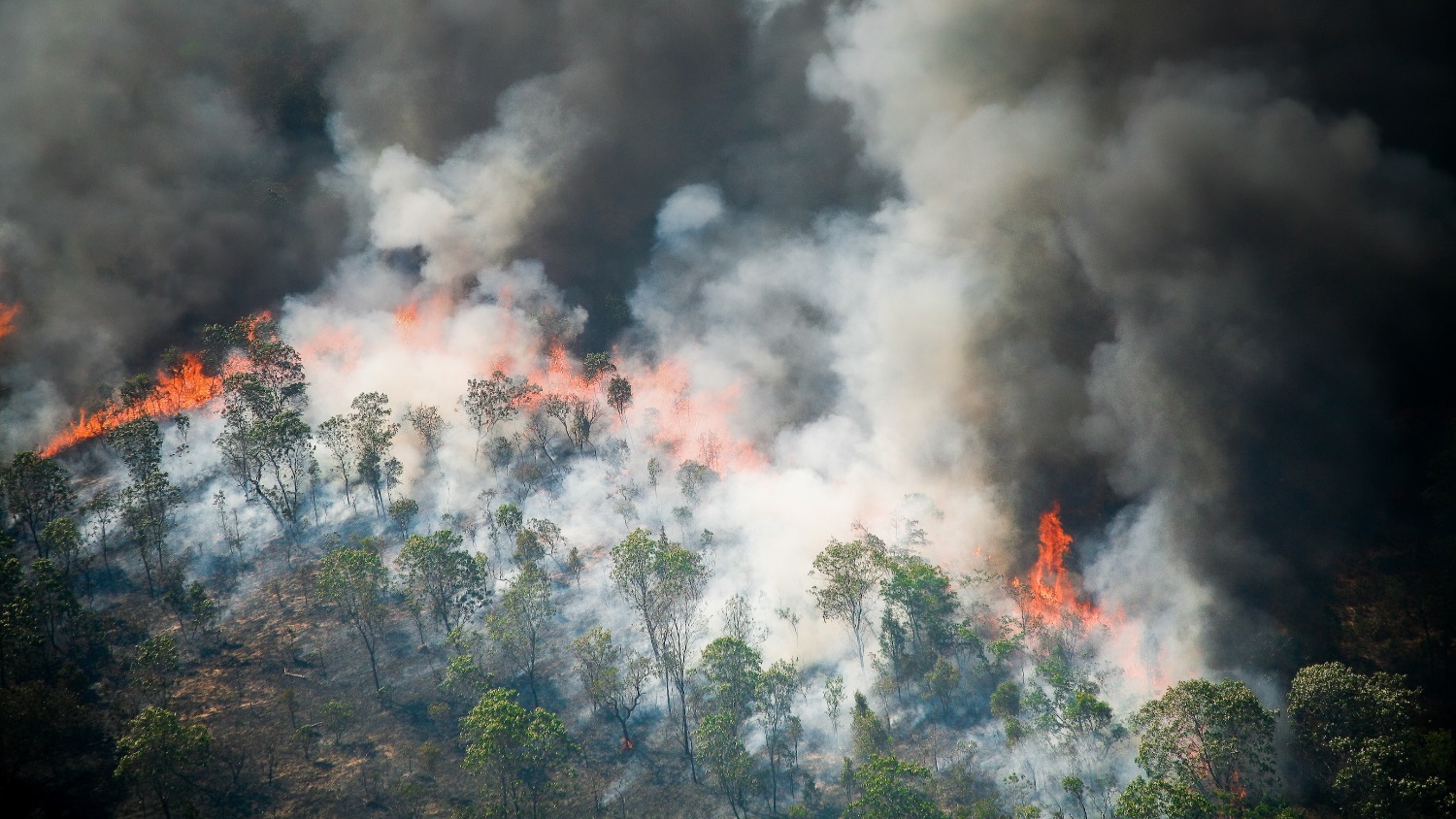Fall Foliage in North Carolina: What to Expect This Year
This guide will help you track when the colors should start, when they’ll peak, and much more.

Every year, as summer fades, North Carolina’s forests transform into a vibrant display of red, orange and yellow leaves — a seasonal spectacle that draws millions of tourists to the Blue Ridge Parkway, Great Smoky Mountains and beyond.
If you’re wondering when fall foliage will begin in North Carolina in 2025, experts say the timeline should be similar to previous years, with color changes starting in the upper mountains and gradually progressing toward the coast.
“We will likely see patchy fall colors toward the end of September in the upper elevations of North Carolina’s mountains,” said Robert Bardon, a professor of forestry and environmental resources at North Carolina State University’s College of Natural Resources.
Bardon, who also serves as the college’s associate dean for Extension, has been forecasting North Carolina’s fall foliage season for over a decade, providing reliable predictions that help communities and visitors plan for the peak of the season.
When to Expect Peak Fall Foliage

Knowing when fall foliage peaks is essential for anyone hoping to experience the season at its most vibrant. The timing of peak color can vary significantly depending on elevation, weather conditions and location, making it important to plan accordingly. According to Bardon, the following general timeline may help guide your planning efforts:
Late September: Patchy fall color begins to appear at the highest elevations of the North Carolina mountains, especially above 5,000 feet.
Early to mid-October: Fall color becomes more noticeable and widespread at elevations above 4,000 feet, including areas along the Blue Ridge Parkway.
Mid-October: Peak color typically occurs at elevations between 4,000 and 5,000 feet in the mountains.
Late October to early November: Peak color moves into the foothills and the Piedmont region.
Early to mid-November: Peak color reaches the Coastal Plain region, marking the final stage of the season’s progression.
Key Conditions for Fall Foliage

The duration of the fall foliage season and the intensity of leaf colors are heavily influenced by weather patterns, including temperature fluctuations and sunlight exposure.
“For the best colors, a combination of sunny days and cool, but not freezing, nights is ideal for a vibrant display,” Bardon said.
Cool nighttime temperatures slow the production of chlorophyll, the green pigment in leaves. This breakdown of chlorophyll reveals underlying pigments such as carotenoids, which produce bright orange hues, and xanthophylls, which give leaves their yellow tones.
Sunny days enhance the production of sugars in the leaves through photosynthesis. As nights become cooler, these sugars can become trapped in the leaves. This buildup of sugars triggers the production of anthocyanins, a group of pigments responsible for the red and purple hues that appear in fall foliage.
Factors That Can Diminish Fall Foliage

Above-average temperatures can delay the onset of fall colors, causing trees to continue producing chlorophyll longer, which keeps leaves green and delays the revealing of fall colors. This disruption can lead to a later and sometimes shorter display of colorful foliage.
Drought conditions can stress trees, causing them to shed leaves prematurely in an effort to conserve moisture, which in turn shortens the duration of the fall foliage season. These conditions can also reduce a tree’s ability to move and store sugars, resulting in fewer reds and purples, and more dull browns.
Rainy, overcast weather reduces sunlight and keeps nighttime temperatures warmer, which can delay the breakdown of chlorophyll and postpone the onset of fall colors. It also limits the production of anthocyanins in leaves. As a result, yellows and oranges become more prominent, while reds appear less vibrant or even absent.
Tropical storms, which often bring heavy rainfall and strong winds, can physically damage trees and prematurely knock leaves off the branches. When these storms sweep through an area during the autumn months, the powerful gusts can strip trees of their colorful leaves before they’ve had a chance to reach their peak vibrancy. Additionally, excessive rain can saturate the soil and weaken tree roots, making trees more vulnerable to stress.
Fall 2025 Weather: What to Expect

Across the United States, different weather patterns are beginning to emerge that will have a direct impact on the timing, intensity and duration of fall foliage this year. The National Weather Service, along with other meteorological agencies, is actively tracking these evolving conditions. Here’s a look at what current forecasts show:
Temperature: There is a slight chance of above-average temperatures for North Carolina this fall, according to the National Weather Service’s three-month climate outlook for September through November.
Precipitation: North Carolina’s fall season has “equal chances” of being wetter than average, drier than average or near-average, meaning current forecasting models do not indicate a clear trend in precipitation and that all three scenarios are considered equally likely based on available data.
Tropical storms: Scientists with the National Oceanic and Atmospheric Administration have predicted a 60% chance of an above-normal 2025 Atlantic hurricane season, including 3-5 major storms with winds of 111 mph or greater. Hurricane season ends on November 30.


